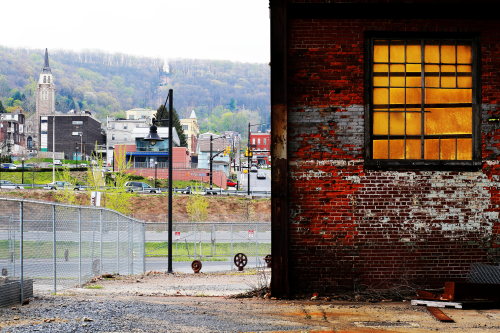Add a new title to Ohio’s mantle as presidential battleground state: gate keeper.
At least for the Democrats.
But approaching next week’s key primary election, neither party has offered much of an answer to Ohio’s key question: What’s the vision for the state’s economy in the 21st century?
Since 2000, more than 220,000 manufacturing jobs have disappeared. Cleveland, Akron, Dayton and Toledo are among the nation’s 20 metro regions most battered by foreclosures.
But the seeds of solutions lie in Ohio’s metropolitan areas – home to 81 percent of the state’s population and producers of 87 percent of its economic output.
The presidential candidates must describe in detail how the federal government would build on the assets that matter in today’s economy.
So what really matters?
INNOVATION MATTERS
The ability to exploit new ideas through new products and processes is critical for competing against rising metros in China and India that can always excel on price.
Ohio once was the cradle of innovation in this country. In the 1950s, the state ranked sixth in the nation on patents per capita. By 2006, it was 22nd.
Federal innovation policies today are fragmented, blasé toward research commercialization and blind to how innovation and jobs arise from the intense interaction of firms, workers, universities and investors.
What if these scattershot efforts were organized under one roof as a National Innovation Foundation?
HUMAN CAPITAL MATTERS
Innovation demands a work force with levels of education and skills that are continuously upgraded.
But only 23 percent of adults in Ohio have a bachelor’s degree, placing the state 39th in the nation, and only 56 percent of college freshmen in Ohio earn a bachelor’s degree within six years, ranking the state 19th in the nation.
Federal education and human capital strategies are disconnected, with the goals of increasing high school and college completion rates largely divorced from the goals of math and reading proficiency.
What if the federal government matched state, local and private-sector contributions to community trusts that help students from struggling public school districts pay for college? These “promise” programs could build human capital and revitalize ailing school systems.
INFRASTRUCTURE MATTERS
State-of-the-art transportation, telecommunications and energy distribution are critical.
Yet Ohio is characterized by “slow growth and fast sprawl.” For every new housing unit built from 1980 to 2000, the state lost more than four acres of rural land. And the bill is coming due for aging water and sewer systems and freeways.
Federal transportation and infrastructure policy is a free-for-all, geared more toward political backscratching than infrastructure needs.
What if the federal government empowered metros to use transportation spending to achieve sustained prosperity and sustainable growth in exchange for greater accountability on congestion and greenhouse gas emissions?
QUALITY PLACES MATTER
Despite distinctive neighborhoods, downtowns and waterfronts, Ohio’s older industrial cities struggle, losing jobs and population, but growing poverty.
Federal tools simply don’t exist for metropolitan areas to make sense of a mishmash of preservation, transportation and other programs littered throughout federal agencies.
What if the federal government were a partner in reinventing the landscapes of communities, using walkable streets, historic buildings and other established infrastructure, instead of funding sprawl?
Fortunately, smart, strategic action has already begun at the state and local levels with lessons for national reform.
Gov. Ted Strickland has proposed a November bond measure that would improve roads and rail infrastructure, clean polluted building sites and seed biomedical and energy innovation.
However, in a fiercely competitive global economy, states and metros cannot go it alone. Of all states, Ohio is in a political position to demand fresh solutions.
The time for tough questions and frank responses has arrived.
Katz is a vice president of the Brookings Institution and director of its Metropolitan Policy Program. Berube is a fellow at Brookings and research director of the Metro Program.



Commentary
Op-edAn Economic Blueprint? The Candidate Who Has One Should Find a Receptive Ohio
February 24, 2008